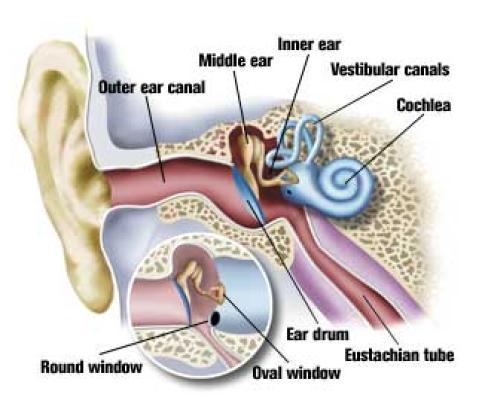
VALSALVA MANEUVER: This is the method most divers learn. Pinch your nose and gently blow through your nose. The resulting overpressure in your throat usually forces air up your Eustachian tubes.
But the Valsalva maneuver has three problems: It does not activate muscles which open the Eustachian tubes, so it may not work if the tubes are already locked by a pressure differential. It’s all too easy to blow hard enough to damage something.
TOYNBEE MANEUVER: With your nose pinched, swallow. Swallowing pulls open your Eustachian tubes while the movement of your tongue, with your nose closed, compresses air against them.
LOWREY TECHNIQUE: A combination of Valsalva and Toynbee. While closing your nose, blow and swallow at the same time.
EDMONDS TECHNIQUE: While tensing the soft palate (the soft tissue at the back of the roof of your mouth) and throat muscles and pushing the jaw forward and down, do a Valsalva maneuver.
FRENZEL MANEUVER: Pinch your nose and close the back of your throat as if straining to lift a weight. Then make the sound of the letter "K." This forces the back of your tongue upward, compressing air against the openings of your Eustachian tubes.
VOLUNTARY TUBAL OPENING: Tense the muscles of the soft palate and the throat while pushing the jaw forward and down as if starting to yawn. These muscles pull the Eustachian tubes open. This requires a lot of practice, but some divers can learn to control those muscles and hold their tubes open for continuous equalization.
Practice Makes Perfect Divers who experience difficulty equalizing may find it helpful to master several techniques. Many are difficult until practiced repeatedly, but this is one scuba skill you can practice anywhere. Try practicing in front of a mirror so you can watch your throat muscles.
When To Equalize Sooner, and more often, than you might think. Most authorities recommend equalizing every two feet of descent. At a fairly slow descent rate of 60 feet per minute, that’s an equalization every two seconds. Many divers descend much faster and should be equalizing constantly.
The good news: as you go deeper, you’ll have to equalize less often-another result of Boyle’s Law. For example, a descent of six feet from the surface will compress your middle ear space by 20 percent and produce pain. But from 30 feet you’d have to descend another 12.5 feet to get the same 20 percent compression.
When you reach your maximum depth, equalize again. Though the negative pressure in your middle ear may be so small that you don’t feel it, if it’s maintained over several minutes it can gradually cause barotrauma.
Tips For Easy Equalizing
1. Listen for the "pop." Before you even board the boat, make sure that when you swallow you hear a "pop" or "click" in both ears. This tells you both Eustachian tubes are open.
2. Start early. Several hours before your dive, begin gently equalizing your ears every few minutes. "This has great value and is said to help reduce the chances of a block early on descent, Chewing gum between dives seems to help,
3. Equalize at the surface. "Pre-pressurizing" at the surface helps get you past the critical first few feet of descent, where you’re often busy with dumping your BC and clearing your mask. It may also inflate your Eustachian tubes so they are slightly bigger.
4. Descend feet first. Air tends to rise up your Eustachian tubes, and fluid-like mucus tends to drain downward. Studies have shown a Valsalva maneuver requires 50 percent more force when you’re in a head-down position than head-up.
5. Look up. Extending your neck tends to open your Eustachian tubes.
6. Use a descent line. Pulling yourself down an anchor or mooring line helps control your descent rate more accurately. Without a line, your descent rate will probably accelerate much more than you realize. A line also helps you stop your descent quickly if you feel pressure, before barotrauma has a chance to occur.
7. Equalize often, trying to maintain a slight positive pressure in your middle ears.
8. Stop if it hurts. Don’t try to push through pain. Your Eustachian tubes are probably locked shut by pressure differential, and the only result will be barotrauma. If your ears begin to hurt, ascend a few feet and try equalizing again.
9. Avoid milk. Some foods can increase your mucus production. Dairy products can cause a fourfold increase.
10. Avoid tobacco and alcohol. Both tobacco smoke and alcohol irritate your mucus membranes, promoting more mucus that can block your Eustachian tubes.
11. Keep your mask clear. Water up your nose can irritate your mucus membranes, which then produce more of the stuff that clogs.